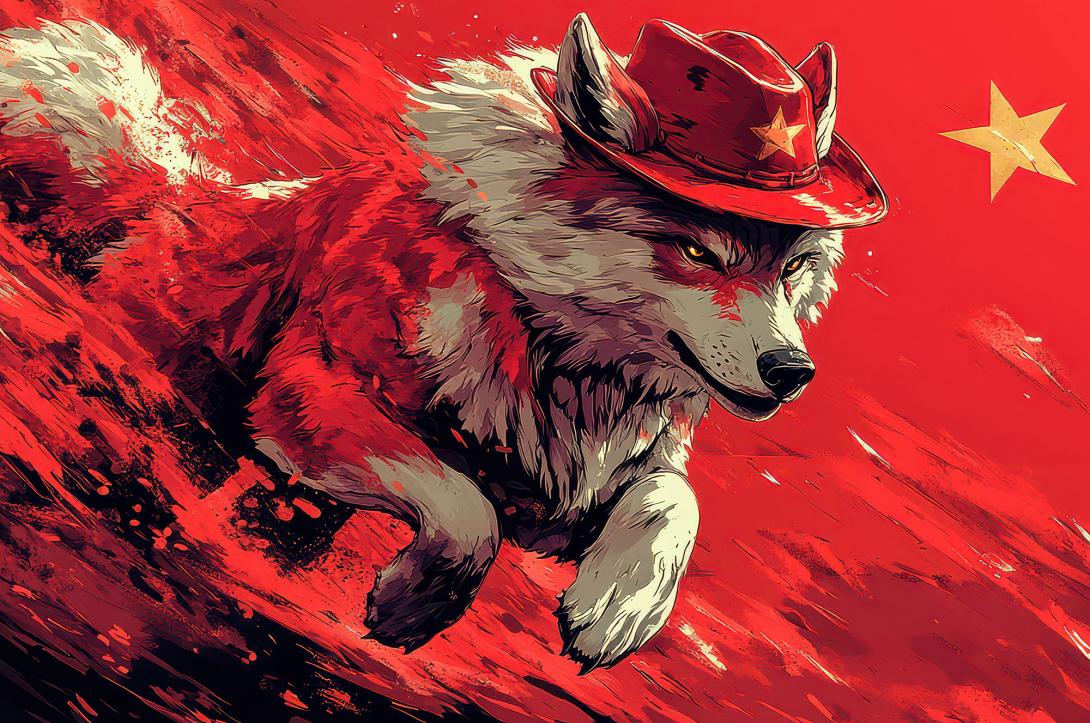President's Commentary: The Chinese Communist Party’s Big Bad Wolf Transformation
The United States, along with its partners and allies, is in a strategic competition with China, a rivalry between the two greatest superpowers in history.
The Chinese Communist Party (CCP) is undoubtedly the gravest threat we and our international friends could face—the only country that can challenge us economically, technologically, politically and militarily.
The CCP wants to be the planet’s big bad wolf. China is implementing a long-term strategy to bend the world to the CCP’s advantage and impose on all of us the communist party’s vision of how societies should function.
Technology is one means China uses to coax or coerce others into doing the CCP’s will. For China, technology is not for the betterment of mankind—although it is sometimes packaged to look that way. Instead, it is a means of stealing ideas from others, spying on its own citizens and worldwide populations, violating human rights, stamping out individual freedoms and exerting greater control.
But the CCP has faltered in its attempted transformation into global big bad wolf status.
As noted in my February column, the World Economic Forum reported that U.S. business and academic grant funding far outpaces China in some key areas, including artificial intelligence for scientific research, reconfigurable intelligent surfaces, high-altitude platform stations and integrated sensing and communication.
Additionally, China appears to be ahead of the United States in some technology areas, such as hypersonics and next-generation mobile communications. Still, we have invested significantly in quantum computing and communication and continue to lead in this vital arena.
Although the Chinese startup DeepSeek shocked the world with its low-cost AI model, the company is now accused of using ChatGPT to train its model. China also stands accused of sneaking into our critical infrastructure, repeatedly stealing data to prop up its own technological capabilities and positioning itself to wreak havoc on our way of life.
Furthermore, despite the CCP’s obviously inflated economic numbers, China’s once booming economy is now trapped in a downward spiral, weakening its ability to influence and control others.
Even worse for China, in January, RAND Corporation, a nonprofit, nonpartisan research organization, issued an intriguing report questioning whether China’s People’s Liberation Army (PLA) is actually prepared for war.
Timothy R. Heath, senior international defense researcher at RAND, wrote the report “The Chinese Military’s Doubtful Combat Readiness,” arguing that the modernization of the PLA is “fundamentally driven by the imperative to keep the Chinese Communist Party in power and not to fight a war.”
Heath acknowledges that China’s warfighting capacity appears formidable, but he insightfully makes the case that militaries are built for different purposes and often do not multitask well. Those built to prevail against foreign adversaries prioritize merit-based promotions, flexible command systems and a professional ethos that values allegiance to institutions over loyalty to individual leaders. Such a military might prove effective against foreign enemies but is poorly suited to domestic political interventions.
On the other hand, countries with weak or insecure governments build militaries to “deter coups, maintain domestic order, and fight insurgents,” and leaders of those countries “might prioritize measures that increase political reliability even if they worsen the military’s capacity to fight foreign adversaries.”
China may yet transform into the apex predatory the CCP envisions. The CCP has the means and the intent, and so it remains a threat.
But for now, it is weakened, giving the United States and our allies an opportunity to gain advantage.
We can begin with a national innovation strategy, which AFCEA has drafted for the new administration to adopt and adapt as it sees fit. We can forge ever-greater ties between the government, military, industry and academia and work together to invent new ways to enhance economic and national security, not just in the United States but among all free nations.
And we can continue accelerating innovation and developing new capabilities for the benefit of all.





Comments